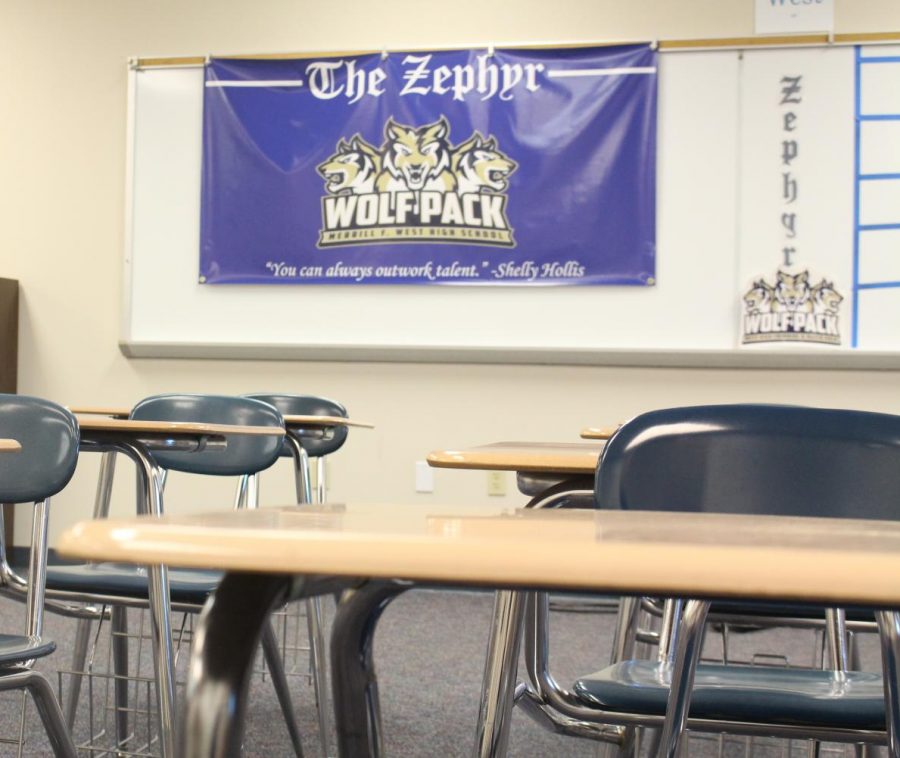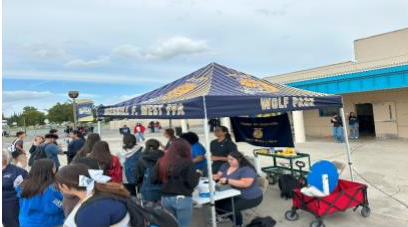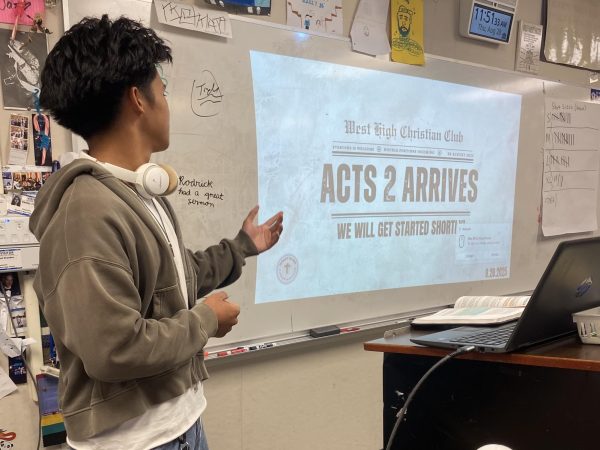Hybridizing Our Learning
The New Educational Transition
As we pass the anniversary of the COVID quarantine, West High students will finally populate the school desks once again as we transition to a hybrid learning schedule beginning March 23, 2021. With fourth quarter starting, how are we supposed to make the leap from distance to hybrid? There’s many questions circulating within parents, students and teachers alike, but with extensive plans and people ready for a change of scenery, here’s what we know.
There are three learning options available to students in the new hybrid model: hybrid, full-time distance or switching to Tracy Unified School District’s (TUSD) Independent Study Charter School. Students in the hybrid model will attend school in-person for two days of the week while the other group is at home, then switch and spend the other days at home in the virtual setting. The week will look like this: last names A-L will attend Mondays/Thursdays, last names M-Z will attend Tuesdays/Fridays and everyone stays in virtual learning on Wednesdays. Those who opt out of in-person learning will stay at home in full-time distance learning through Microsoft Teams. Cameras turned on and active participation will be heavily encouraged to mimic a school setting even from home. Finally, the last option is enrolling in independent study. While these students can exercise more flexibility over schedules while still completing high school coursework, this option will remove the students from special programs and many of the West High campus activities.
Now, this all may sound extremely familiar from the October 13th TUSD Board Meeting (ages ago). Then, only the first and third options were presented (hybrid or independent study), but upon further review at the October 20th Special TUSD Board Meeting, the decision to remain in distance learning pushed this transition further and further back until safe for all students.
As of today, March 25, many teachers and faculty have received vaccines and supplies necessary for daily temperature checks, symptom screening, contact tracing and even virtual learning, and they are anticipating the return of students. Teacher on Special Assignment (TOSA), Mr. Tom Haim said, “As teachers, we know we’d be doing amazing things with them [students] in person.”
As for what the school day may look like, classrooms are now set up with webcams and/or headpieces that will help teachers provide quality learning for both groups of students at a time. Teaching both distance and virtual simultaneously presents several stresses on teachers. However, TUSD Superintendent Dr. Brian Stephens commends educational staff for their efforts, saying, “I think our teachers have done just a fantastic job, and I think our students have proven to be adaptable in many ways. [Distance learning] has worked surprisingly well, and I’ve been glad we were able to get the technology in the hands of students who need it.” On the subject of technology, all students, both at home or in-person will receive district-issued devices and hotspots to minimize academic dishonesty and monitor their school activity. Hallways will be labeled with arrows and all entrances will be open to minimize the bottle neck of students entering all at once. While (sadly) there isn’t a designated lunchtime in our schedule, after school, the plan is for students to pick up lunches at cafeteria windows and leave the campus for lesser interactions. To prepare for all of this, teachers will be given a workday on Friday, March 19th.
Schedule wise, our first semester looked much different with three periods a day, two days a week, and all six classes on Wednesdays. Now, with all six classes every day, this same second-semester schedule will be used for hybrid learning. What several students do miss now is the aid of “asynchronous learning.” Speaking to the pros of this extra time, junior Jennifer Nguyen said, “Distance learning has taught me how to manage my time well. With only spending around three hours in synchronous learning time, it’s really given me a chance to focus on my hobbies and my mental health.” Many teachers offered extra office hours for students struggling in classes – something especially useful to English Language Learner (ELL) students. Asynchronous study groups, one-on-one student tutoring and room for mental health support helped many students adjust to the virtual learning this year.
However, many are ready to return from distance learning to feel connected to their campus. We’ve passed three quarters, and many teachers still know students only by name. Stephens emphasized the necessity of the positive interactions of in-person learning, saying “There’s a loss of contact; we’re not connecting with people. In the 21st century, I think relationships and working with people – that’s where it’s at, and we’re just losing that component.” Additionally, several struggle with finding motivation to work from home. Speaking to the cons of online learning, senior Kyle Ou said, “This endless cycle of waking up, sitting behind my laptop for 10+ hours, going to sleep, and then doing it all over again day after day; it takes a toll on you overtime. There’s very little interaction from students to each other and students to their teachers, especially. I’ve heard the phrase ‘Type it in the chat’ all year.” With the campus feeling like a home to many, mental health struggles from feeling removed from a community really factors into why many students are in need of some company again. “I just want things to go back to normal; everyone does,” said Ou. “…Obviously it’s not going to be 100% safe any time…However, if the cases do go down, then yes, I would like to go back to school and make the most of what’s left of this school year.”
With students returning comes some concerns about safety as COVID vaccinations aren’t mandatory and life doesn’t always going according to plan (as if the pandemic didn’t teach us that enough.) Freshman Kavya Gadamsetti said, “It’s harder to create a learning environment in person when students will be distracted by COVID guidelines and their ability to maintain both theirs and their family’s health.” Of course, there may be several obstacles in achieving a new sense of normalcy, but there have been many efforts to structure an effective safety plan. Stephens assured TUSD members, saying “We’re trying to find that right balance between educational needs and safety needs. It’s not going to be perfect, but we’ll do the best we can.
Let us not forget the lessons learned from distance learning. Though it’s been an unpredictable journey, there have been several positives – from students learning new life lessons and gaining advanced technological skills to amazing adaptability from food and transportation staff, there’s much more we’ve come to be capable of as a community. Haim mentions how distance learning has helped the teacher community, saying “From working with other teachers, it’s really been a big challenge, and looking back, we handled that really well, at least in a virtual sense. It’s brought teachers together. It’s increased collaboration as a staff, and that makes us better teachers in the end with better curriculum and more opportunities for the students.”
Well Wolf Pack, one more quarter to go of this unbelievable year. Whichever mode of learning you’re in, good luck and stay safe!
Additional Resources:
West High School COVID Safety Plan: https://resources.finalsite.net/images/v1614960941/tracyk12caus/bcqw18eauydrgthrp1gp/WestHighCFOVIDSafetyPlan3-5-21.pdf
Further TUSD COVID Resources:
https://www.tracy.k12.ca.us/parentstudent-information/health-services/coronavirus-page
West High Mental Health Services:
https://westhigh.tracy.k12.ca.us/parent-student-information/mental-health-services







Shazad Ramzi • Mar 15, 2021 at 11:28 am
Me, I think covid is not as serious as it’s said to be. You can call me a conspiracy theorist or whatever you want but I don’t buy it. First there is no way a covid-19 particle can be stopped by a mere “mask.” Second this “virus” has a 99.5% survival rate. I don’t see necessarily why a whole global pandemic arose because of this but it did. Now it’s starting to lift off and I can’t wait to finally get out and have fun like we used to ?